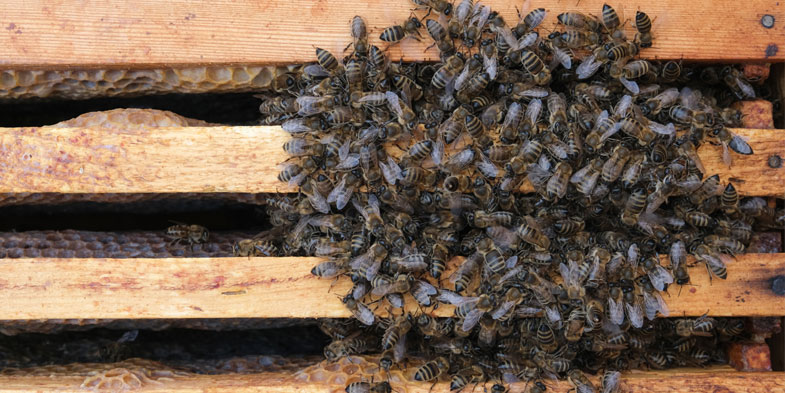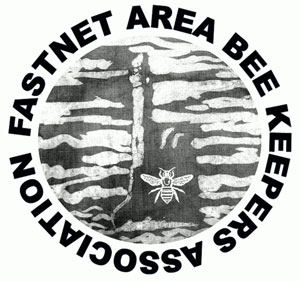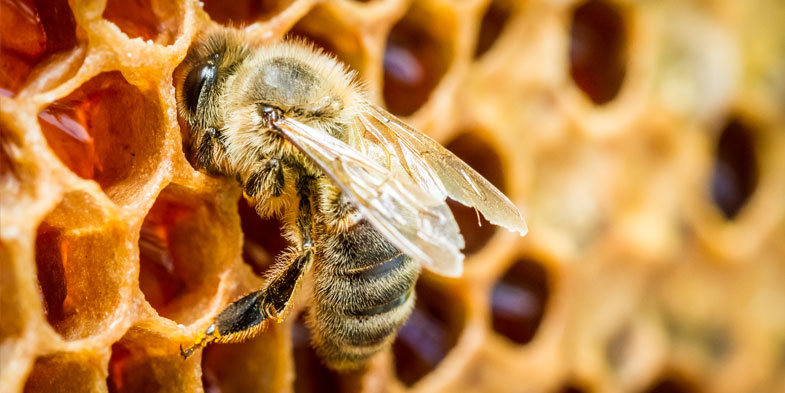Hello Beekepers!
The clocks go back, the temperature drops, and the nights are longer and darker. The queen bumblebees go underground and hibernate, but what do our honeybees do?
When the temperature falls below 13 degrees, the girls rarely fly and they huddle together in the hive and form what is known as a cluster. The workers surround queenie and keep the temperature constant by flapping (vibrating) their wings. Their most important job is to ensure the queen’s safety so that she can start laying again in spring. The drones have been evicted.
Winter Stores & Hefting Hives
The bees are still working hard vibrating their wings and must have a food supply. The amount of food a colony needs to have stored to get them through to spring is a debated topic and often depends on the bee species. I keep the native Irish black bee (Apis mellifera mellifera) and they overwinter on far fewer stores than other bees. As I’ve explained in an earlier letter, I feed them in September until they want no more, using a solution of 2:1 sugar to water. I generally add a few millimetres of Hive Alive (a natural supplement) to the syrup also. The scents of lemongrass and thymol from this seems to alert the bees and makes it easier for them to detect the food and they then take down the syrup much more rapidly.
Depending on what books you read, the average amount of stores a colony needs is above 30 lbs. The frames in the brood box should be fairly full of stores as queenie will not be laying and space is not as important as it would be in the breeding season. I have mentioned practising HEFTING your hives and no book will teach you what a good weight feels like, but with practice, you’ll get to know what’s ok and what’s not.

Ventilation, Floor Inserts & Securing Hives
The bee population will have decreased to about 10,000 to 20,000 bees by the end of winter. The colony needs this number because, despite not foraging, there’s still a lot to be done around the house. Minding queenie, maintaining the cluster and constant temperature and ventilating the hive. Ventilation is of major significance. For example, say the colony needs to consume three quarters of a pound of stores per week, this in turn produces about a cup of liquid in the form of vapour. This has to be got out of the hive.
Another point to ponder – do I leave the floor insert in the hive or remove it? Some do and some don’t. I leave the floor boards in about 3 quarters of the way and feel that this acts as protection from the elements, while also making sure that the girls can keep their home ventilated. Should you have a peep at the insert during the winter months it can hold a wealth of information, eg. droppings, wetness etc. Dampness in the hive kills.
You can help the bees so much by ensuring that their home is secure and in good condition. Make sure to have the hives strapped to the hive stand and I put a cement block on top of the roof also. Not great for the back, but better for a good night’s sleep!
Preliminary Certificate Presentation

Congratulations to those members who passed their preliminary exams – just a few of whom are pictured above with Gus McCoy, FIBKA secretary. We’re very proud of you all. Huge thanks to Gus, who travelled all the way down to West Cork to present the certificates and give us a talk on the new FIBKA educational structure, as well as some beekeeping tips. It was lovely to see so many of you in person!
And, on a similar note…
Coming Up
We’re having our AGM and a revision of this year’s work presented by myself (Mairead) in our forthcoming meeting. Could you please let us know if you would like to meet face-to-face in the Riverside Studio in Skibbereen or if you’d all rather meet via Zoom? Please let us know ASAP so we can book the premises if that’s your decision. Looking forward to meeting you then!
Happy Beekeeping,
Mairead Love & the team at FABKA

